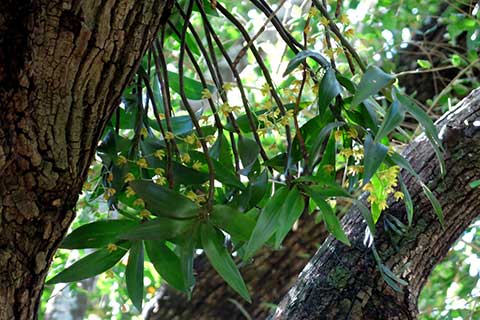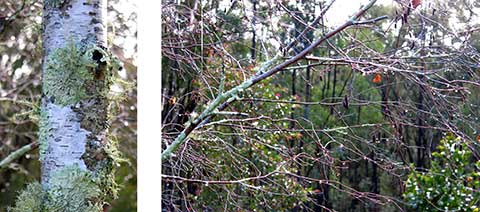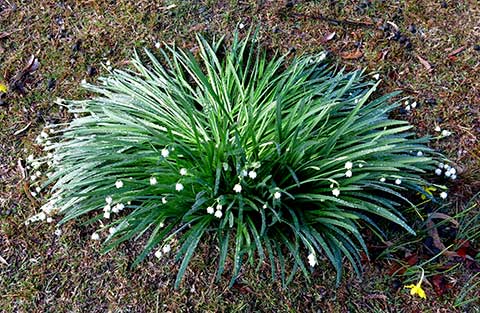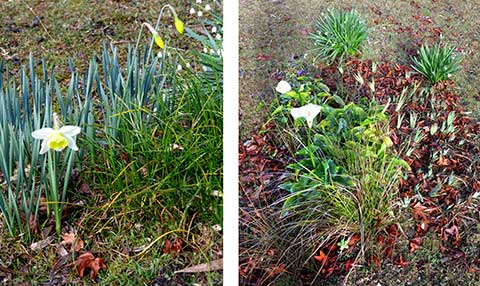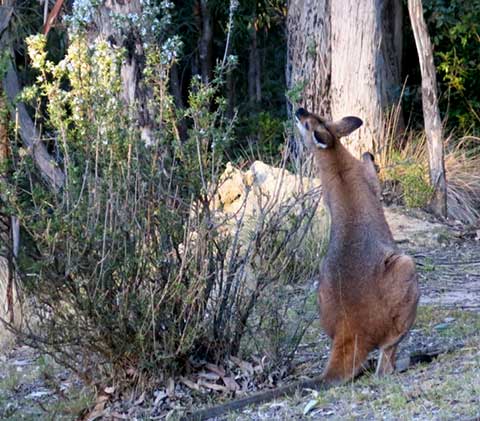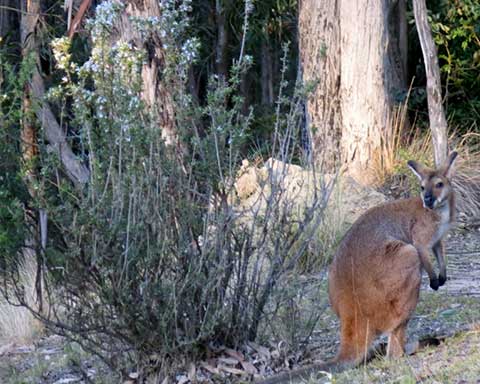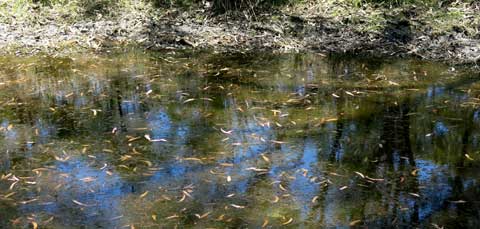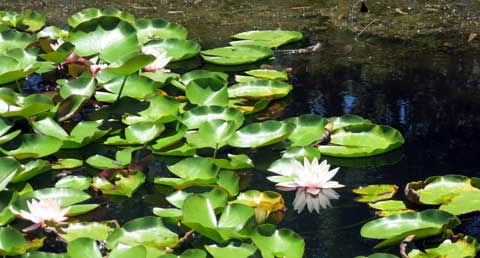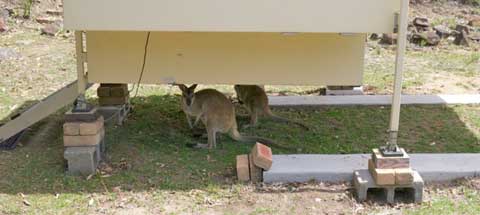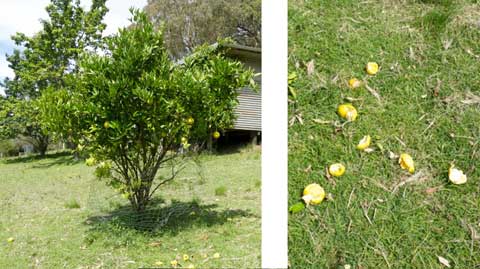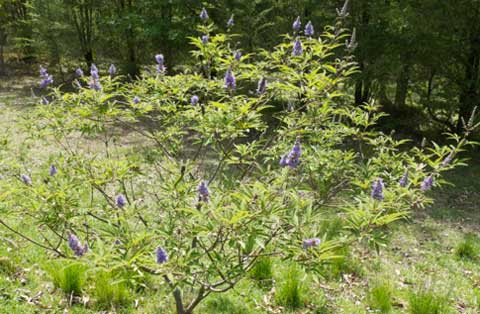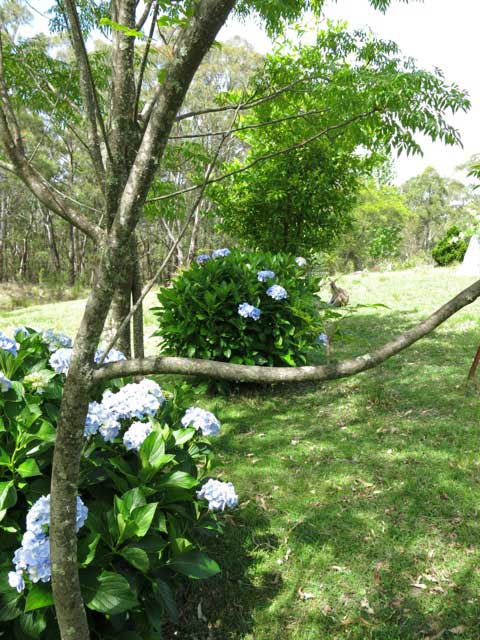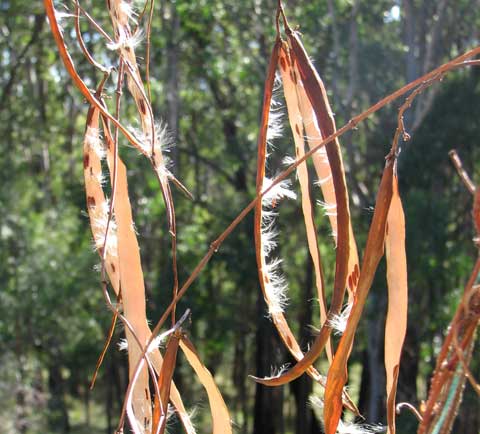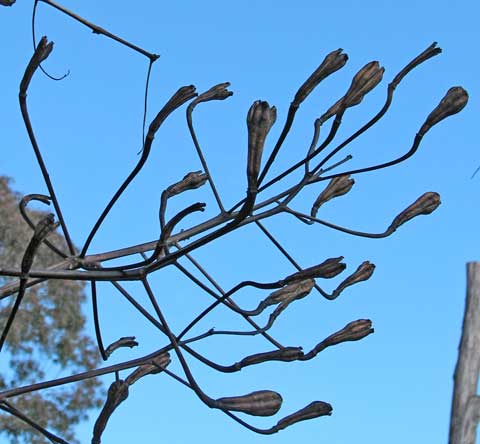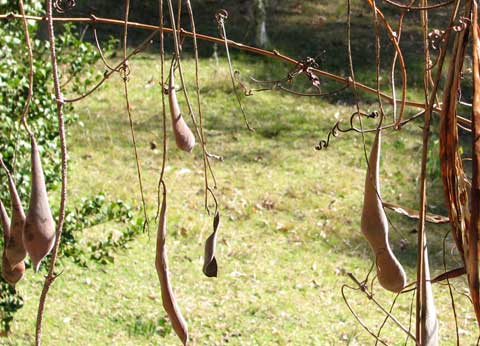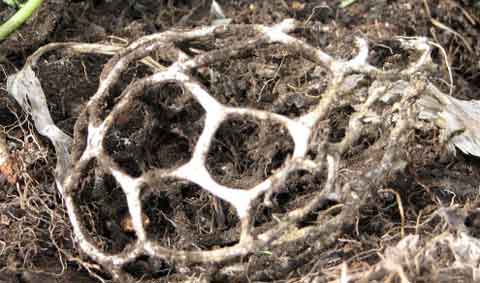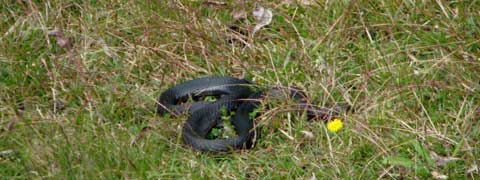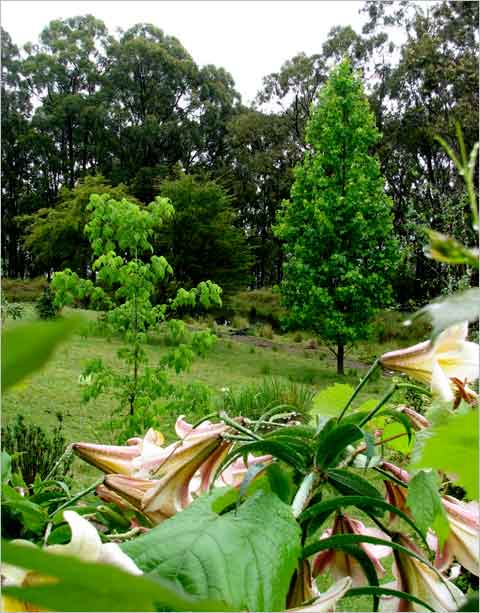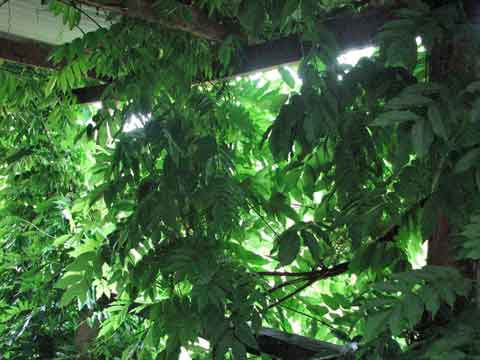Back in my old Mountain home, the verandah grew a living green blind each summer, blazed red and pink in autumn, and leaflessly let in the sunshine all winter.
Naturally, I took cuttings of this Ornamental Grape to bring with me.
They survived the trip and the transplant and here they are flagging their first autumn on their new verandah home.
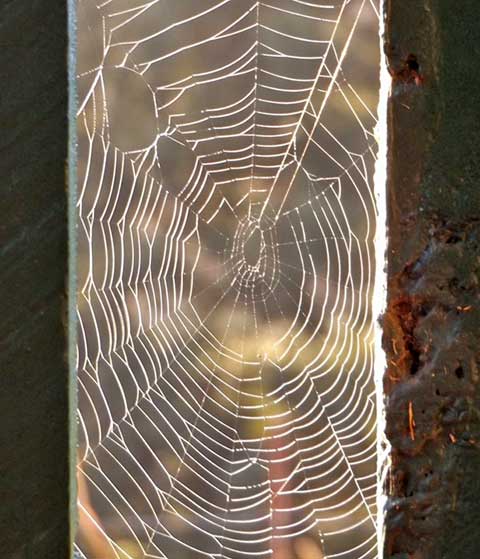
The other decoration on this verandah are the intricate spiderwebs between the uprights, only visible when delineated by a fine morning mist.
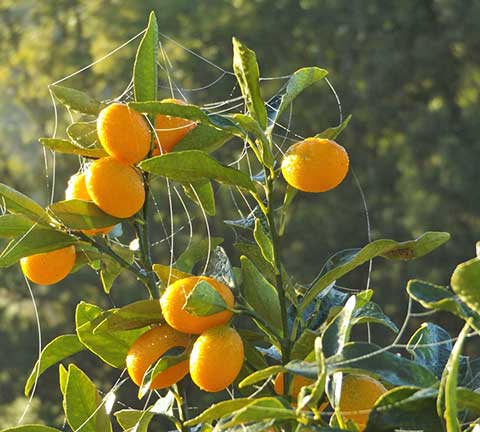
The spiders do other useful work, such as binding the leaves of the little Nagami Cumquat into a neat parcel.
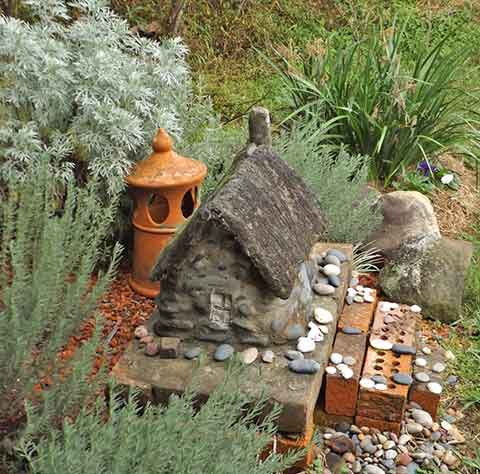
With great difficulty I also brought with me my Dad’s Place. It was built by me and my sisters to house his ashes.
Not having been designed to be mobile, it weighed a ton.
But here it is, resettled, its lavender and wormwood plant settings fast making it look less newly transplanted. My grandkids have decorated the steps and verandah for him.
Fittingly, behind it is a terracotta chimneypot from my childhood farm, Dad’s orchard venture. I never saw it on a chimney, but I always loved it and I have carted it about for over 50 years. It lived in the rockery at the Mountain for the last 35.
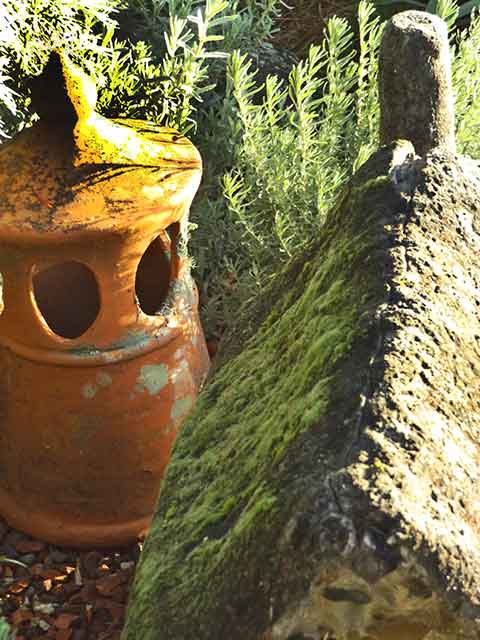
Here the southern face of its ferro-cement roof has grown a velvety green moss. I consider this makes up for the ridgeline crack it suffered in the move.
